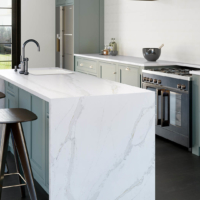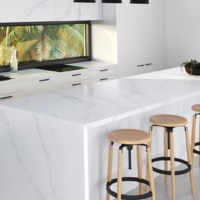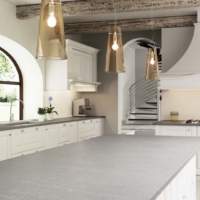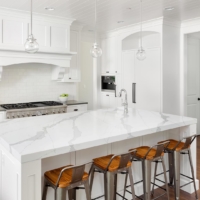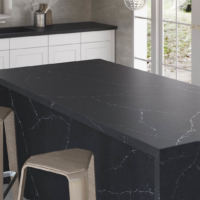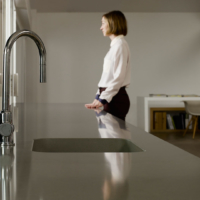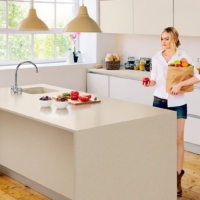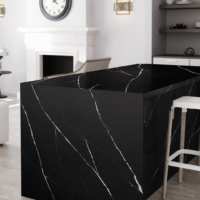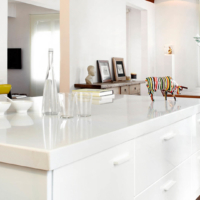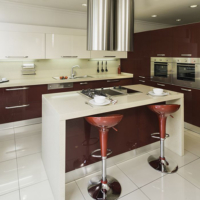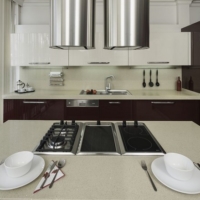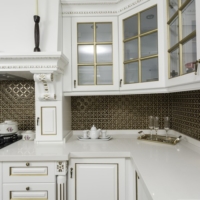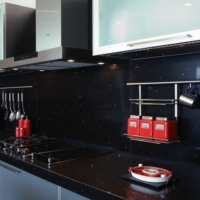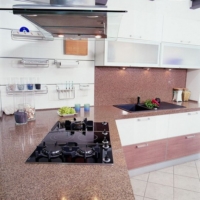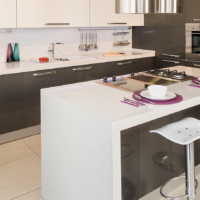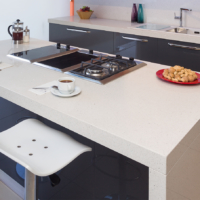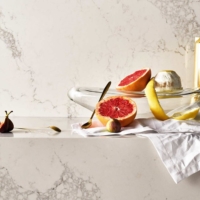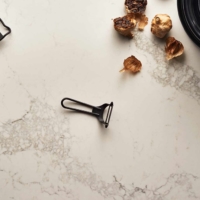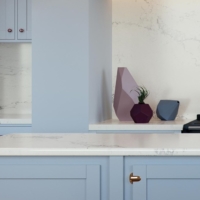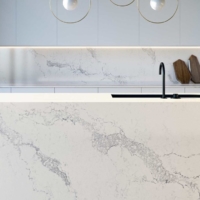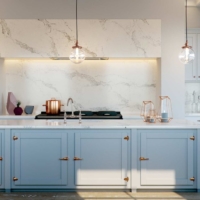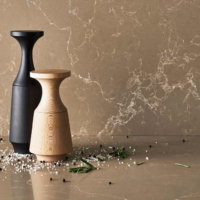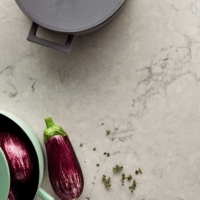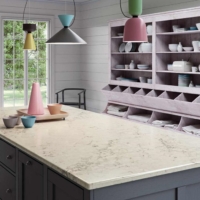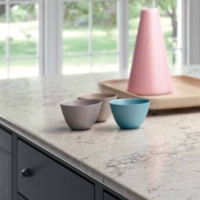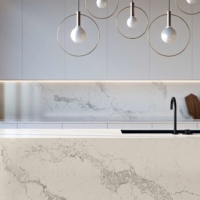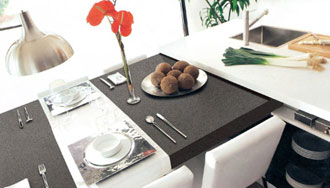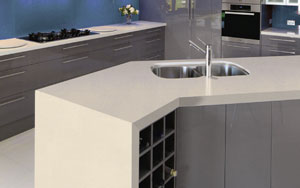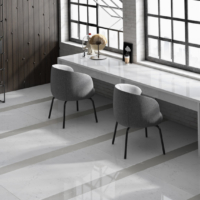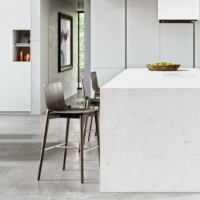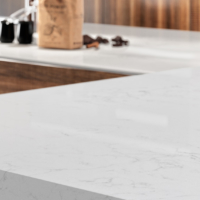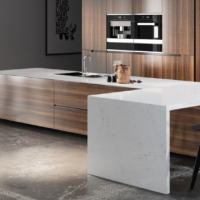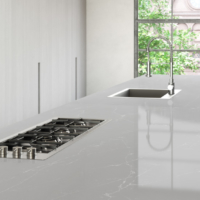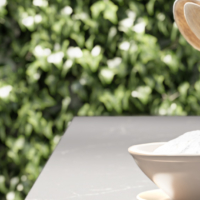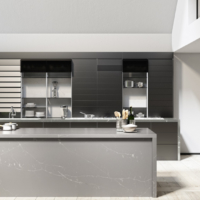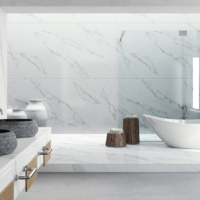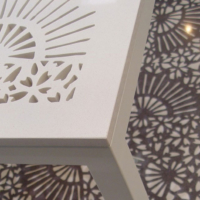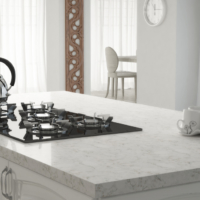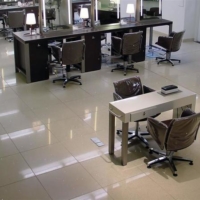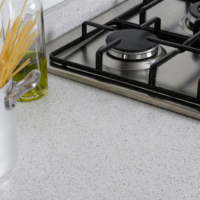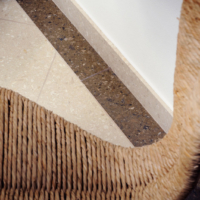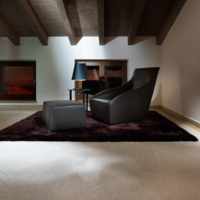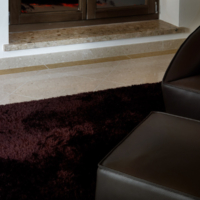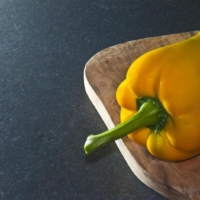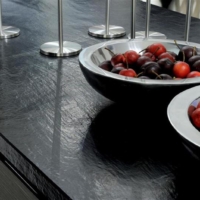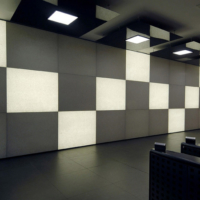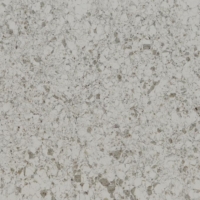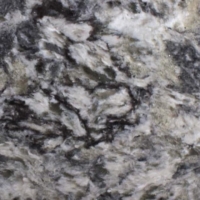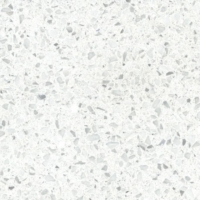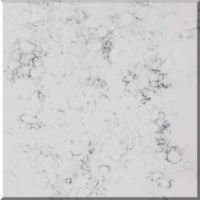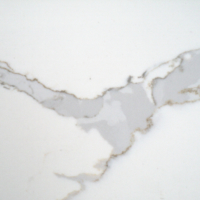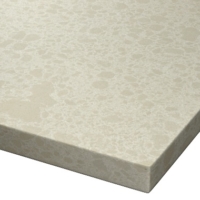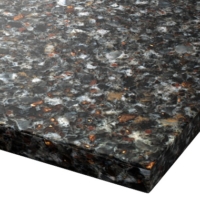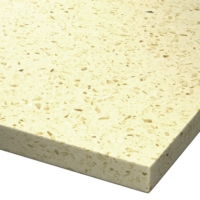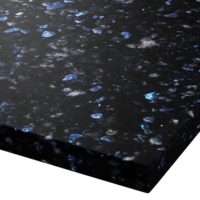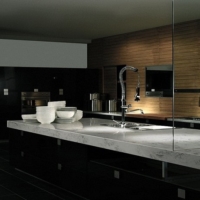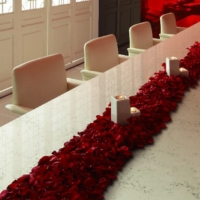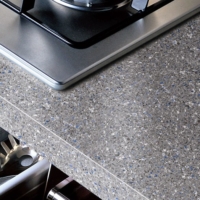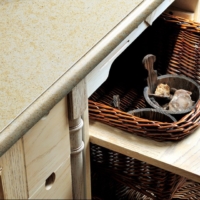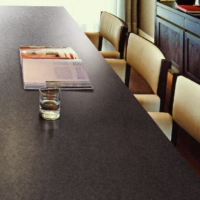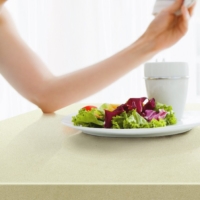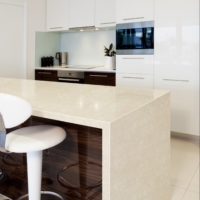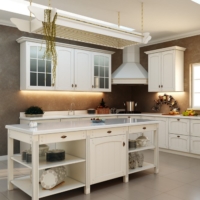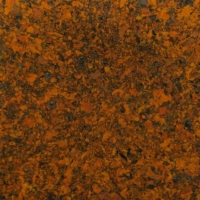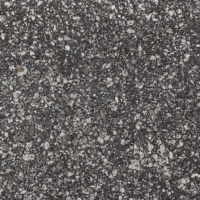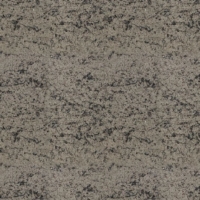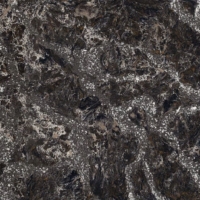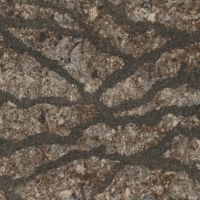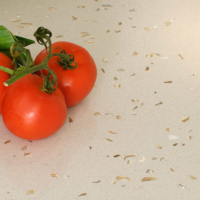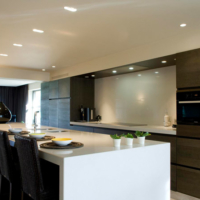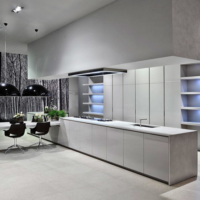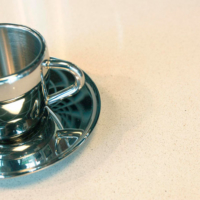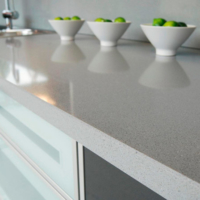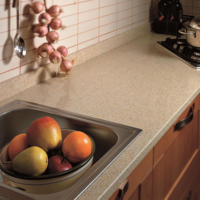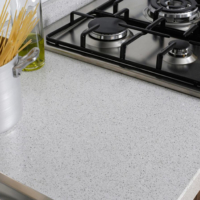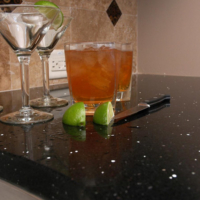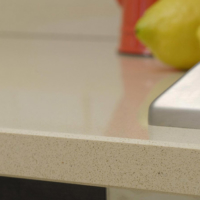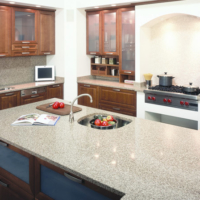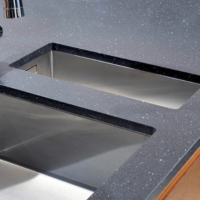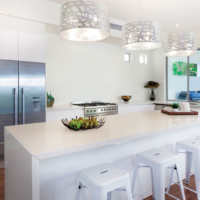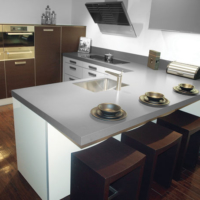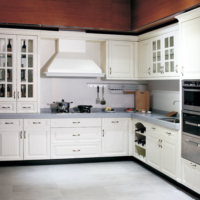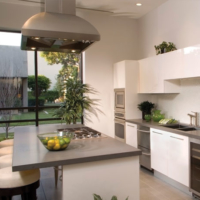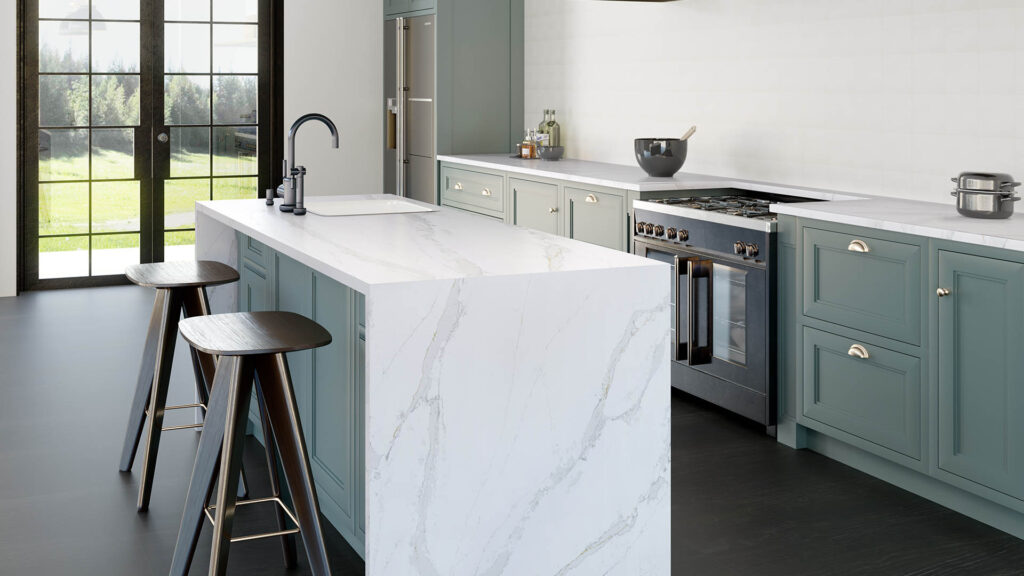Black marble countertops are a luxurious and sophisticated addition to any kitchen. They provide a bold and dramatic aesthetic while maintaining a timeless elegance. Whether you prefer a modern, classic, or industrial style, black marble countertops can seamlessly integrate into your kitchen design. Here are some of the top design ideas to help you make the most of your black marble countertops.

1. Pairing Black Marble with White Cabinets for a Classic Contrast
One of the most popular ways to style black marble countertops is by pairing them with white cabinets. The contrast between the dark, rich tones of the marble and the crisp, clean look of white cabinetry creates a timeless and sophisticated design. This combination works well in both contemporary and traditional kitchens.
Design Tips:
- Opt for shaker-style white cabinets for a classic appeal.
- Use gold or brass hardware to add warmth and elegance.
- Incorporate a white subway tile backsplash for a clean and cohesive look.
2. Creating a Modern Aesthetic with Black-on-Black Design
For a sleek and modern kitchen, consider an all-black design with black marble countertops, black cabinets, and dark flooring. This monochromatic approach creates a striking and cohesive space that exudes sophistication.
Design Tips:
- Use matte black cabinets to contrast with the glossy or veined texture of the marble.
- Add under-cabinet lighting to create depth and highlight the marble’s natural beauty.
- Incorporate stainless steel or chrome appliances for a touch of brightness.
3. Industrial Chic with Black Marble and Exposed Brick
Industrial-style kitchens often feature raw materials like exposed brick, concrete, and metal accents. Black marble countertops fit seamlessly into this aesthetic by adding an element of luxury to the rugged industrial feel.
Design Tips:
- Use open shelving with metal brackets to complement the industrial vibe.
- Pair black marble with a butcher block island for a mix of textures.
- Choose pendant lighting with exposed bulbs for an edgy, urban look.
4. Warm and Cozy with Wooden Accents
To soften the bold look of black marble, incorporate wooden elements in your kitchen. Natural wood cabinets, floating shelves, and wooden bar stools can create a warm and inviting space.
Design Tips:
- Use oak or walnut wood for a rich, earthy feel.
- Add woven or rattan chairs for a cozy, rustic touch.
- Select warm lighting fixtures to balance the cool tones of the marble.
5. Elegant Minimalism with Sleek Lines
A minimalist kitchen with black marble countertops focuses on clean lines and a clutter-free environment. This design is perfect for those who appreciate simplicity and sophistication.
Design Tips:
- Choose handleless cabinets for a sleek, uninterrupted look.
- Keep décor minimal, focusing on high-quality materials and finishes.
- Use a waterfall edge on the countertop for a seamless and modern aesthetic.
6. Luxurious Touch with Gold and Brass Accents
Gold and brass accents add a touch of luxury to black marble countertops. Whether through cabinet handles, faucets, or lighting fixtures, these warm metallic tones elevate the overall kitchen design.
Design Tips:
- Choose gold or brass pendant lights over the kitchen island.
- Use a gold-trimmed backsplash to enhance the elegance of the space.
- Select bar stools with brass legs for a cohesive look.
7. Adding a Pop of Color with Bold Backsplashes
If you want to add a playful and vibrant touch to your kitchen, consider a bold backsplash that complements black marble countertops. This can create a dynamic and eye-catching focal point in your space.
Design Tips:
- Use emerald green, deep blue, or terracotta tiles for a striking contrast.
- Opt for geometric or Moroccan-inspired patterns to add visual interest.
- Choose a glossy finish to reflect light and brighten the space.
8. Farmhouse Charm with Black Marble and Vintage Details
For a farmhouse-inspired kitchen, combine black marble countertops with vintage and rustic elements. This design blends the elegance of marble with the charm of traditional farmhouse style.
Design Tips:
- Use a farmhouse sink with brass or black fixtures.
- Install open shelving with decorative mason jars and vintage dishware.
- Choose distressed wood cabinets for a cozy, lived-in feel.
9. Smart Lighting to Enhance Black Marble’s Elegance
Proper lighting is essential to highlight the beauty of black marble countertops. Whether you prefer a bright and airy space or a moody and dramatic ambiance, the right lighting can make all the difference.
Design Tips:
- Install pendant lights over the island to create a focal point.
- Use LED strip lighting under cabinets to illuminate the countertops.
- Opt for dimmable lights to adjust the ambiance as needed.
10. Open Concept Kitchens with Black Marble Islands
In open-concept kitchens, a black marble island can serve as a stunning centerpiece that ties the entire space together. Whether used for dining, meal prep, or entertaining, a black marble island enhances both functionality and aesthetics.
Design Tips:
- Use a waterfall edge for a seamless and modern look.
- Pair with high-contrast bar stools to make the island stand out.
- Keep surrounding elements neutral to let the marble be the focal point.
Conclusion
Black marble countertops are a versatile and stunning addition to any kitchen. Whether you prefer a classic black-and-white contrast, a sleek modern aesthetic, or a cozy farmhouse vibe, there are endless ways to incorporate black marble into your kitchen design. By carefully selecting cabinetry, lighting, and complementary materials, you can create a space that is both functional and visually striking. Whatever your style, black marble countertops will add a touch of sophistication and luxury to your kitchen for years to come.

